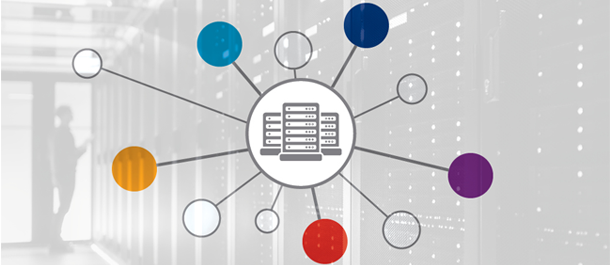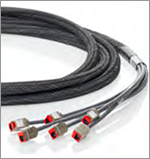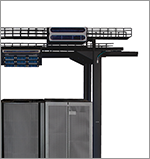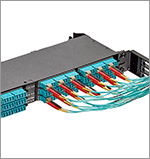The Biggest Decisions when Designing a Data Center Network

The design and deployment of data centers is as much an art as it is a science. Myriad decisions must be made throughout the process, whether you're tackling a new build or a tech refresh.
Here are some key infrastructure-related choices that can have a big impact on your project's labor requirements, deployment time, and manageability:

TERMINATION METHOD
Choosing whether to deploy pre-terminated cabling or perform field terminations is the first step in data center design. Both options have distinct advantages. The method selected will be influenced by the amount of planning you want to do, how quickly you want new equipment deployed, and how much labor you can invest in the project.
Pre-Terminated Cabling Advantages:
- Offers rapid deployment by reducing installation time and labor
- Eliminates the need for transmission performance testing in the field
- Minimizes material waste, jobsite cleanup, and purchase of proprietary tools or equipment
- Eliminates variation due to differing skill-levels of field technicians
- Better overall transmission and lower loss budgets due to a cleaner factory termination environment
Field Terminated Cabling Advantages:
- More control during installation and more flexibility should the infrastructure change
- Less upfront planning of cabling and termination routes and lengths
- Reduces purchase lead-time when ordering cable
 NETWORK STANDARDIZATION
NETWORK STANDARDIZATION
Industry standards are an important tool for data center design. The standards created by ISO, IEEE, and TIA ensure the interoperability of equipment regardless of the geographic location, field of industry, or size of the network. However, forgoing established standards can sometimes be vital to furthering a specific organization technique, business need, or data center design.
Industry Standardization Advantages:
- Helps stabilize manufacturing costs and market prices
- Provides consistency among organizations within an industry, and personnel or departments within a business
- Lowers staff education time and hiring costs
- Minimizes human error and network downtime
- Creates consistent installations for organizations with multiple data centers
Network Customization Advantages:
- Custom connectors, adapters, patch panels, cable assemblies and routing systems may be more efficient and costeffective for extremely large networks or organizations with significant purchasing power and needs that standard products cannot meet
- Drives innovation: New standards, such as those that ushered in Cat 6A, are often outgrowths of application customizations by manufacturers and end-users with performance or capability requirements not addressed by existing standards
 CABLE MANAGEMENT
CABLE MANAGEMENT
Cable management is one of the most visible elements of data center design. The decision to deploy a free-standing floorbased cable management system that places the cabling backbone above the racks, or a building-based infrastructure organization that routes cable under the floor or in the ceiling, has many ramifications to both the overall data center design, the engineering of the building, and the function of the network itself.
Free-Standing Management Advantages:
- Can be installed in any network application
- Typically offers the greatest design versatility and space-saving options
- Places no weight burden on the building's existing structure
- Allows the preparation and deployment of an entire rack in many POD-type rack-and-roll methodologies
- Minimizes network downtime, speeds deployment, and reduces the likelihood of human error
- Provides numerous options for zero-RU patching
- Increases airflow and heat dissipation
Building-Based Infrastructure Advantages:
- Installation in the flooring removes the cabling backbone from view and may offer protection from accidental damage (a subfloor is required to support the racks)
- An overhead cable run allows the installation of ladder racking or cable trays supported from the ceiling via threaded rods (the ceiling must be engineered to support the cable load)
 DENSITY
DENSITY
Port density requirements vary from data center to data center. Whether standard density or high density is deployed within a network will impact an organization's budget resiliency, system downtime, and network manageability, both during the data center design phase and throughout the lifetime of the system.
Standard Density Advantages:
- May fully meet the needs of smaller data centers and enterprise applications
- Facilitates field terminations and fiber splicing
- Allows network administrators to make frequent moves, adds, and changes
- Provides an easy means of tracing patch cords and trunk cables
- Offers more space to accommodate splice trays and port ID labeling
High Density Advantages:
- Offers significant space savings
- Reduces costs by minimizing the amount of expensive data center floor space required for patching
- For large data center and enterprise applications, a higher density of ports per RU will pose no inconvenience as changes are made at the rack level more often than at the port level
- Network manageability can be facilitated with the addition of cable managers, pre-terminated cabling, and meticulous port identification
When making decisions for your network infrastructure, it is critical to understand the impact of new technology and standards, and build flexibility into your network when migrating to 40G, 100G, and beyond. It is also important to get assistance from experts who understand the evolution of the data center environment and the latest network technology. Leviton data center designers and engineers have extensive experience with the most popular active equipment, network topologies, and transmission methods. Many of them are active members on standards bodies that define future data center networks, including standards for 25, 40, 100, and 400 gigabit networks.
To learn more about data center design and solutions available from Leviton, visit leviton.com/datacenters.


